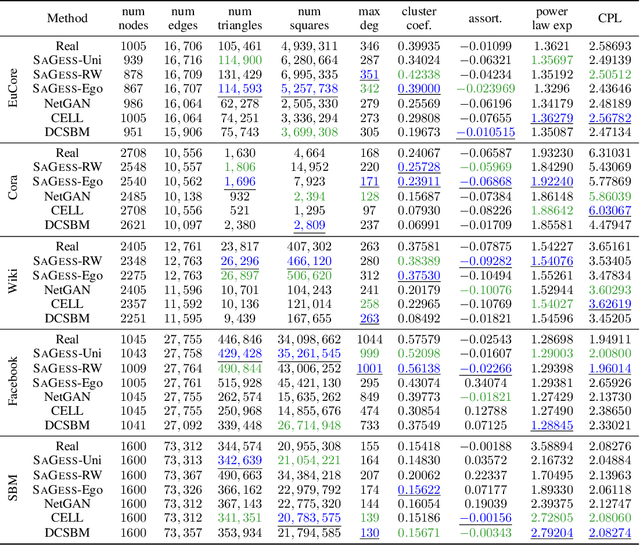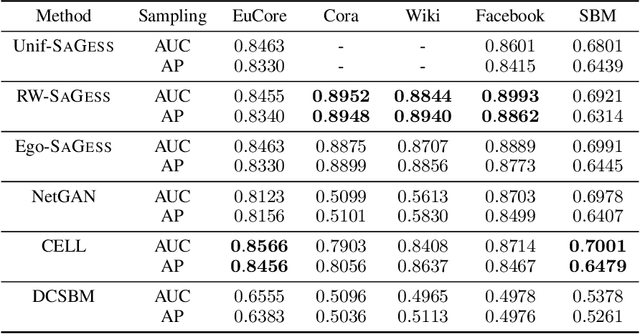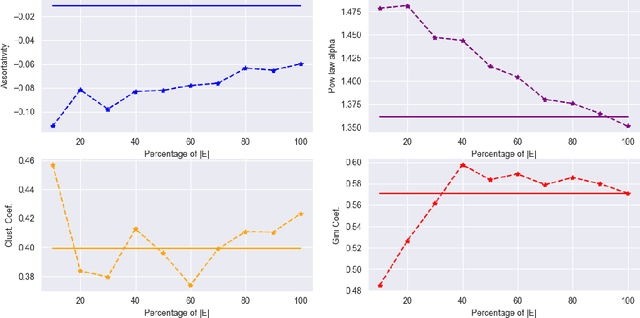Mihai Cucuringu
Can LLM-based Financial Investing Strategies Outperform the Market in Long Run?
May 11, 2025Abstract:Large Language Models (LLMs) have recently been leveraged for asset pricing tasks and stock trading applications, enabling AI agents to generate investment decisions from unstructured financial data. However, most evaluations of LLM timing-based investing strategies are conducted on narrow timeframes and limited stock universes, overstating effectiveness due to survivorship and data-snooping biases. We critically assess their generalizability and robustness by proposing FINSABER, a backtesting framework evaluating timing-based strategies across longer periods and a larger universe of symbols. Systematic backtests over two decades and 100+ symbols reveal that previously reported LLM advantages deteriorate significantly under broader cross-section and over a longer-term evaluation. Our market regime analysis further demonstrates that LLM strategies are overly conservative in bull markets, underperforming passive benchmarks, and overly aggressive in bear markets, incurring heavy losses. These findings highlight the need to develop LLM strategies that are able to prioritise trend detection and regime-aware risk controls over mere scaling of framework complexity.
Split Conformal Prediction under Data Contamination
Jul 10, 2024Abstract:Conformal prediction is a non-parametric technique for constructing prediction intervals or sets from arbitrary predictive models under the assumption that the data is exchangeable. It is popular as it comes with theoretical guarantees on the marginal coverage of the prediction sets and the split conformal prediction variant has a very low computational cost compared to model training. We study the robustness of split conformal prediction in a data contamination setting, where we assume a small fraction of the calibration scores are drawn from a different distribution than the bulk. We quantify the impact of the corrupted data on the coverage and efficiency of the constructed sets when evaluated on "clean" test points, and verify our results with numerical experiments. Moreover, we propose an adjustment in the classification setting which we call Contamination Robust Conformal Prediction, and verify the efficacy of our approach using both synthetic and real datasets.
Dynamic angular synchronization under smoothness constraints
Jun 06, 2024



Abstract:Given an undirected measurement graph $\mathcal{H} = ([n], \mathcal{E})$, the classical angular synchronization problem consists of recovering unknown angles $\theta_1^*,\dots,\theta_n^*$ from a collection of noisy pairwise measurements of the form $(\theta_i^* - \theta_j^*) \mod 2\pi$, for all $\{i,j\} \in \mathcal{E}$. This problem arises in a variety of applications, including computer vision, time synchronization of distributed networks, and ranking from pairwise comparisons. In this paper, we consider a dynamic version of this problem where the angles, and also the measurement graphs evolve over $T$ time points. Assuming a smoothness condition on the evolution of the latent angles, we derive three algorithms for joint estimation of the angles over all time points. Moreover, for one of the algorithms, we establish non-asymptotic recovery guarantees for the mean-squared error (MSE) under different statistical models. In particular, we show that the MSE converges to zero as $T$ increases under milder conditions than in the static setting. This includes the setting where the measurement graphs are highly sparse and disconnected, and also when the measurement noise is large and can potentially increase with $T$. We complement our theoretical results with experiments on synthetic data.
Maximum Likelihood Estimation on Stochastic Blockmodels for Directed Graph Clustering
Mar 28, 2024Abstract:This paper studies the directed graph clustering problem through the lens of statistics, where we formulate clustering as estimating underlying communities in the directed stochastic block model (DSBM). We conduct the maximum likelihood estimation (MLE) on the DSBM and thereby ascertain the most probable community assignment given the observed graph structure. In addition to the statistical point of view, we further establish the equivalence between this MLE formulation and a novel flow optimization heuristic, which jointly considers two important directed graph statistics: edge density and edge orientation. Building on this new formulation of directed clustering, we introduce two efficient and interpretable directed clustering algorithms, a spectral clustering algorithm and a semidefinite programming based clustering algorithm. We provide a theoretical upper bound on the number of misclustered vertices of the spectral clustering algorithm using tools from matrix perturbation theory. We compare, both quantitatively and qualitatively, our proposed algorithms with existing directed clustering methods on both synthetic and real-world data, thus providing further ground to our theoretical contributions.
L2G2G: a Scalable Local-to-Global Network Embedding with Graph Autoencoders
Feb 02, 2024



Abstract:For analysing real-world networks, graph representation learning is a popular tool. These methods, such as a graph autoencoder (GAE), typically rely on low-dimensional representations, also called embeddings, which are obtained through minimising a loss function; these embeddings are used with a decoder for downstream tasks such as node classification and edge prediction. While GAEs tend to be fairly accurate, they suffer from scalability issues. For improved speed, a Local2Global approach, which combines graph patch embeddings based on eigenvector synchronisation, was shown to be fast and achieve good accuracy. Here we propose L2G2G, a Local2Global method which improves GAE accuracy without sacrificing scalability. This improvement is achieved by dynamically synchronising the latent node representations, while training the GAEs. It also benefits from the decoder computing an only local patch loss. Hence, aligning the local embeddings in each epoch utilises more information from the graph than a single post-training alignment does, while maintaining scalability. We illustrate on synthetic benchmarks, as well as real-world examples, that L2G2G achieves higher accuracy than the standard Local2Global approach and scales efficiently on the larger data sets. We find that for large and dense networks, it even outperforms the slow, but assumed more accurate, GAEs.
Robust Angular Synchronization via Directed Graph Neural Networks
Oct 09, 2023



Abstract:The angular synchronization problem aims to accurately estimate (up to a constant additive phase) a set of unknown angles $\theta_1, \dots, \theta_n\in[0, 2\pi)$ from $m$ noisy measurements of their offsets $\theta_i-\theta_j \;\mbox{mod} \; 2\pi.$ Applications include, for example, sensor network localization, phase retrieval, and distributed clock synchronization. An extension of the problem to the heterogeneous setting (dubbed $k$-synchronization) is to estimate $k$ groups of angles simultaneously, given noisy observations (with unknown group assignment) from each group. Existing methods for angular synchronization usually perform poorly in high-noise regimes, which are common in applications. In this paper, we leverage neural networks for the angular synchronization problem, and its heterogeneous extension, by proposing GNNSync, a theoretically-grounded end-to-end trainable framework using directed graph neural networks. In addition, new loss functions are devised to encode synchronization objectives. Experimental results on extensive data sets demonstrate that GNNSync attains competitive, and often superior, performance against a comprehensive set of baselines for the angular synchronization problem and its extension, validating the robustness of GNNSync even at high noise levels.
Graph Neural Networks for Forecasting Multivariate Realized Volatility with Spillover Effects
Aug 01, 2023Abstract:We present a novel methodology for modeling and forecasting multivariate realized volatilities using customized graph neural networks to incorporate spillover effects across stocks. The proposed model offers the benefits of incorporating spillover effects from multi-hop neighbors, capturing nonlinear relationships, and flexible training with different loss functions. Our empirical findings provide compelling evidence that incorporating spillover effects from multi-hop neighbors alone does not yield a clear advantage in terms of predictive accuracy. However, modeling nonlinear spillover effects enhances the forecasting accuracy of realized volatilities, particularly for short-term horizons of up to one week. Moreover, our results consistently indicate that training with the Quasi-likelihood loss leads to substantial improvements in model performance compared to the commonly-used mean squared error. A comprehensive series of empirical evaluations in alternative settings confirm the robustness of our results.
SaGess: Sampling Graph Denoising Diffusion Model for Scalable Graph Generation
Jun 29, 2023



Abstract:Over recent years, denoising diffusion generative models have come to be considered as state-of-the-art methods for synthetic data generation, especially in the case of generating images. These approaches have also proved successful in other applications such as tabular and graph data generation. However, due to computational complexity, to this date, the application of these techniques to graph data has been restricted to small graphs, such as those used in molecular modeling. In this paper, we propose SaGess, a discrete denoising diffusion approach, which is able to generate large real-world networks by augmenting a diffusion model (DiGress) with a generalized divide-and-conquer framework. The algorithm is capable of generating larger graphs by sampling a covering of subgraphs of the initial graph in order to train DiGress. SaGess then constructs a synthetic graph using the subgraphs that have been generated by DiGress. We evaluate the quality of the synthetic data sets against several competitor methods by comparing graph statistics between the original and synthetic samples, as well as evaluating the utility of the synthetic data set produced by using it to train a task-driven model, namely link prediction. In our experiments, SaGess, outperforms most of the one-shot state-of-the-art graph generating methods by a significant factor, both on the graph metrics and on the link prediction task.
Robust Detection of Lead-Lag Relationships in Lagged Multi-Factor Models
May 11, 2023



Abstract:In multivariate time series systems, key insights can be obtained by discovering lead-lag relationships inherent in the data, which refer to the dependence between two time series shifted in time relative to one another, and which can be leveraged for the purposes of control, forecasting or clustering. We develop a clustering-driven methodology for the robust detection of lead-lag relationships in lagged multi-factor models. Within our framework, the envisioned pipeline takes as input a set of time series, and creates an enlarged universe of extracted subsequence time series from each input time series, by using a sliding window approach. We then apply various clustering techniques (e.g, K-means++ and spectral clustering), employing a variety of pairwise similarity measures, including nonlinear ones. Once the clusters have been extracted, lead-lag estimates across clusters are aggregated to enhance the identification of the consistent relationships in the original universe. Since multivariate time series are ubiquitous in a wide range of domains, we demonstrate that our method is not only able to robustly detect lead-lag relationships in financial markets, but can also yield insightful results when applied to an environmental data set.
OFTER: An Online Pipeline for Time Series Forecasting
Apr 08, 2023Abstract:We introduce OFTER, a time series forecasting pipeline tailored for mid-sized multivariate time series. OFTER utilizes the non-parametric models of k-nearest neighbors and Generalized Regression Neural Networks, integrated with a dimensionality reduction component. To circumvent the curse of dimensionality, we employ a weighted norm based on a modified version of the maximal correlation coefficient. The pipeline we introduce is specifically designed for online tasks, has an interpretable output, and is able to outperform several state-of-the art baselines. The computational efficacy of the algorithm, its online nature, and its ability to operate in low signal-to-noise regimes, render OFTER an ideal approach for financial multivariate time series problems, such as daily equity forecasting. Our work demonstrates that while deep learning models hold significant promise for time series forecasting, traditional methods carefully integrating mainstream tools remain very competitive alternatives with the added benefits of scalability and interpretability.
 Add to Chrome
Add to Chrome Add to Firefox
Add to Firefox Add to Edge
Add to Edge